Picking Up The Pieces
Damaged merchandise is hard to avoid. Sometimes the product is manhandled during shipment, and other times employees are careless when stocking items. Of course, no matter how cautiously merchandise is packed or stocked, breakage won’t go away; there will always be clumsy customers who have accidents in the store.
Some slightly damaged items such as scratched wind chimes, dirty garden flags or wobbly outdoor furniture can be sold at a reduced price and still allow for some profit. Though, unfortunately for retailers, not every piece of inventory can be sold after disfigurement. Broken or damaged pots quickly lose their customer appeal if they are no longer able to effectively hold soil and water, and a pot with missing pieces or cracks is not that aesthetically pleasing. In fact, most of the time it’s hard to imagine such blemished items anywhere but in the trash bin. Yet some creative individuals have found ways to turn broken materials into useful and, in many cases, attractive items that customers can appreciate.
Some of the ways broken pottery can be utilized is in the garden for arts and crafts activities and some landscaping. Be sure to execute caution prior to starting a project. It is important to make sure any sharp or jagged edges are removed before using broken items in new ways, especially if employees or customers will be handling pieces: Breaking away sharp points and filing down rough edges will help to stave off injuries.
Create Art
Broken pieces of pottery, especially if they’re colorful, can be useful in creating mosaic art. Simply put, a mosaic is a form of decoration constructed by inlaying pieces of colorful material to form a picture or pattern. Once the pattern is formed, grout is typically applied to keep everything in place. Almost anything from household accessories like mirrors to bland plant containers and building walls can be decorated with mosaics. Consider applying the pottery pieces to different items in stock, such as creating a mosaic that doubles as shingles on a birdhouse roof. Showcasing new ideas can inspire customers to become creative in their own gardens.
The broken pieces are useful to people outside the garden center, too. Making a supply of pottery pieces available to local schools, art classes and community centers is a good way to help enrich your community. Also, donating broken pottery for arts and crafts ensures that much of what is no longer sellable will not end up in the landfill; art classes and the like are able to utilize much more broken material than a single garden center. To increase garden center traffic and gain positive public relations, consider inviting locals to attend mosaic seminars at the garden center. This brings about the best of both worlds: involving the community and creating interesting pieces to be used in gardens at the same time.
Design With Shards
Many gardeners are aware that broken pottery pieces can be placed over drainage holes in pots to keep soil in and still let excess moisture out. Joanne Gordon, owner of Commonwealth Garden Shoppe, Conyonville, Ore., knows the hole-cover trick and feels that with a little imagination one can do many other interesting things with broken pottery. Her business was among local-business honorees for exemplary recycling efforts; one of which is reusing broken pots in a decorative setting.
In her nursery, Gordon uses broken pots to make a tiered planting. To create the look, she fills a large pot with soil. Then broken pieces of pottery are placed broken end down in the middle of the large pot. Gordon pushes them deep into the soil until they are sturdy. But don’t stick them too deep: A sizable area needs to remain above ground. “These have to be fairly large pieces of pottery,” she explained.
Once the pieces are in the soil, fill the area with more soil up to the lip of the broken pieces. “Put [the] pottery more towards the center of the pot, and you can build the soil up a little bit on both sides,” Gordon recommended. Build it up for two or three tiers. Low-growing plants and flat pots are given height through this method, and trailing plants planted on the top tier spill over the sides of the pottery shards. Gordon noticed her customers like the designs, too: “They think it’s an attractive design.”
Gordon also suggests laying broken or cracked pots down in a garden for some interesting contrast: “If it [the pot] is big and a piece is broken out of it… you just lay it so the broken piece is towards the back.” Flowers can be planted so they emerge from the rim of the tipped-over pot. Placing the broken part out of sight allows the container to look whole again. Another option is to place the area with the missing part towards the top so upright varieties can grow through it.
A pot with a broken bottom can be buried deep in the soil to give the appearance that the plant and the container are growing out of the ground together. Animals also appreciate broken pottery in the garden. Stick large pot portions in the ground so small, shade-loving wildlife can take sanctuary.
In The Landscape
Some materials typically purchased for the landscape can be replaced with broken pottery. Among them are borders for gardens and trees. Large pieces of pottery can be pushed into the ground to form a border. The look can be customized: Each piece can be similar or vary greatly in color and size. A similar suggestion is to write plant names on pottery shards and stick them in the soil for easy plant identification in the garden.
For another option, Gordon feels the pottery, once broken further, can be sprinkled on garden pathways. A dirt path can be transformed aesthetically and functionally once the pieces are added. To begin, grab a mallet and relieve stress by pounding the broken pots into even smaller pieces. Always wear gloves and protective eye gear while hammering. Once a large supply of tiny pieces is amassed, sprinkle them onto paths; just don’t try walking on them in bare feet.
Earn Some Money
A broken pot doesn’t have to mean a complete loss of revenue. Try collecting an assortment of pieces together in a large container and selling them to customers. Ron Brady, owner of City Floral, Denver, Colo., sells broken pots to customers at five pieces for a dollar. In this way, he is able to make a little money off of an otherwise unsellable item, and customers have a ready supply of pottery pieces to use in their projects anytime they like.


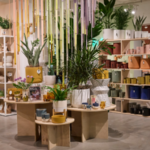
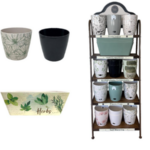


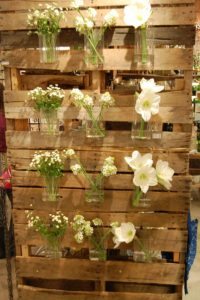
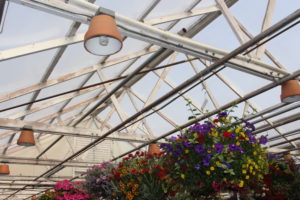
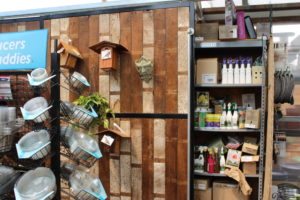

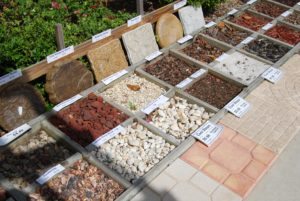
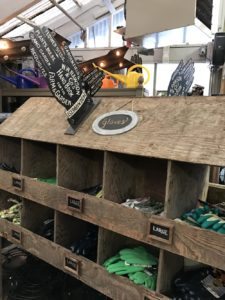



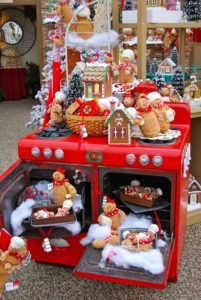
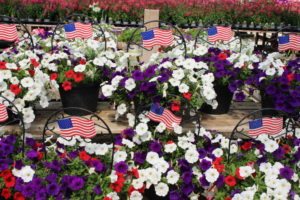
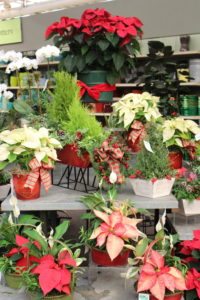
 Videos
Videos





